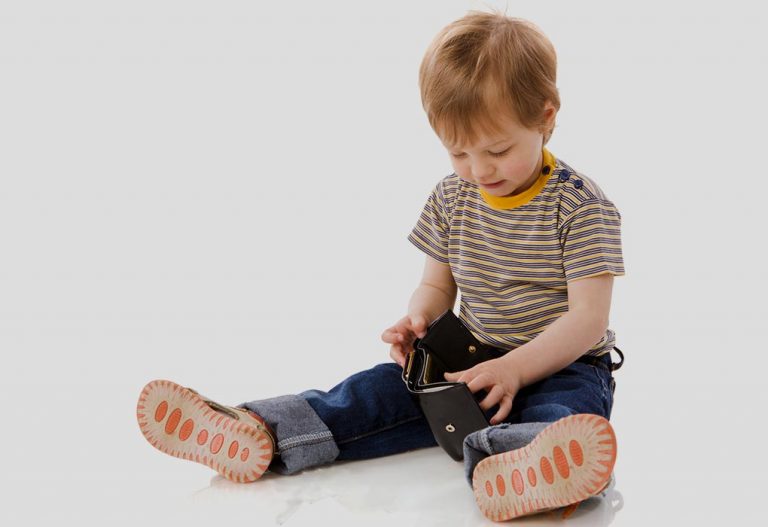10 Very Important Things Parents MUST Do To Prevent Gadget Addiction in Kids!
From using them as pacifiers to exposing your child to them for educational purposes, there are a ton of reasons you let your child use a gadget. As parents, we rely a lot on gadgets to keep the kids entertained too. However, as they say, too much of anything – good or bad – can be harmful and so is the case with gadgets as well!
From using them as pacifiers to exposing your child to them for educational purposes, there are a ton of reasons you let your child use a gadget. As parents, we rely a lot on gadgets to keep the kids entertained too. However, as they say, too much of anything – good or bad – can be harmful and so is the case with gadgets as well!
With the arrival of the 21st century, the technological age has arrived too. Kids as young as 2 and 3 are proficient in using gadgets like smartphones, tablets and computers. While this proficiency can be a boon as it helps in both physical and cognitive development, the downside is too big to ignore!
Disadvantages of Excessive Exposure to Gadgets
Too much usage of gadgets can result in your child becoming addicted to them, which can have a wide variety of effects on your child including:
- Lack of interest in development of real-life practical skills
- Lack of focus or concentration on any task except when it’s done on a gadget
- Poor time management and eating habits
Preventing Gadget Addiction
It is very tough to overcome an addiction, even as adults. This is why some preventive measures are necessary to ensure that your child doesn’t face such an addiction at all! With the widespread use of gadgets everywhere, it’s imperative to put these measures in place immediately:
1. Lead by Example
Children will always follow what their parents do, not what their parents say. If they see you spending a lot of your time on gadgets, they will do the same. Instead, lead by example and focus on cultivating healthy habits for yourself (like reading, cycling, etc.) so as to encourage your kids to follow the same habits. At the very least, try and limit the time you spend on gadgets (esp. the phone!) when in the vicinity of your child.
2. Be Strict With Rules
As a responsible parent, you need to ensure your child has a healthy lifestyle and healthy habits. Make tough decisions and put your foot down on limiting unhealthy habits like too much TV/computer time, no matter the pleading and cajoling. Make sure to explain to them the reasoning behind your decision.
A good thumbrule is NO screen-time for kids under 18 months, and ONE hour per day for kids between 2-5 years. Beyond this, try and limit screen time as much as possible (especially digital media) and do not let it exceed 2-3 hours per day at the very maximum. This is inclusive of TV, laptops, gaming, and mobile phone usage. These guidelines are as per the new norms by the American Academy of Pediatrics.
3. Set a Daily Limit on Screen Time
Allocate an appropriate amount of screen time for your child, irrespective of the gadget (based on the guidelines discussed in #2). Give your child the option to watch TV, use the computer, etc. and let him choose what time of the day he wants to use the gadgets. This gives him a sense of freedom and involves him in making decisions too.
4. Involve Kids in other Activities
To limit gadget addiction, it is important to use different resources within your child’s reach that pique their curiosity. Involve your child in enriching activities like read aloud sessions, sports sessions, board games, art and craft time, etc.
5. Limit The Number of Gadgets in The House
When buying gadgets, try and limit the total number of gadgets in the house keeping the usability and affordability in mind. The kids don’t really need the latest version of every game or laptop. Try and be strict with this right from the very beginning, and for yourself too! Also try and limit the number of visible gadgets in the house. For example, that game can remain in the playroom cupboard through the day until play-time.
6. Spend More Time with Your Kids
This may sound too simplistic, but studies have proved that kids who find themselves with a lot of alone time are more likely to get attached/addicted to gadgets. So, take the initiative to spend more time with your kids and do things that interest them – from playing with dolls to playing hide and seek. It might take quite a lot of effort on your end – but it is sure to pay off.
7. Avoid Using Gadgets as Crutches
It is easy to hand your child a cellphone or turn on the TV to keep him occupied and get your own work done. However, the little things matter more than you think – after a point these gadgets might become an addiction that distract your child from other activities! Instead, be involved, ask what they want to do and listen to what they have to say. Try and enrol the help of your partner, parents, or paid help when needed.
8. Maintain ‘Gadget-Free’ Areas and Time During the Day
From the dining table at dinner time to the play room, certain areas of the house should be marked as ‘gadget free’. Here, the whole family is not allowed to use any gadgets at all. This will ensure your child understands the importance of other activities in relation to gadgets.
9. Monitor The Content your Child Consumes on Gadgets
Make sure that the content your child consumes, including video games and cartoons, is child appropriate. Use this opportunity to communicate with your child about values and morals. This is particularly important in the context of how violence, women and problem-solving are depicted in gaming.
10. Praise Your Child’s Efforts
Finally, it is important to praise your child’s efforts when he makes the effort to prioritize other activities over screen time, of his own accord. Praising positive behaviour will encourage your child to continue doing it!
Do you have any other tips to prevent and control gadget addiction in kids? Share your thoughts with fellow moms in the comments below.
















